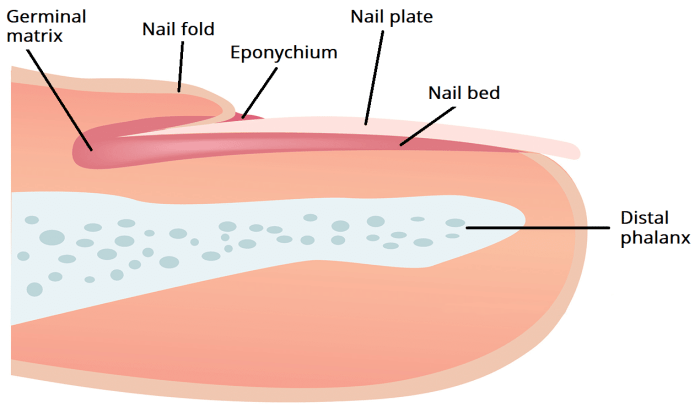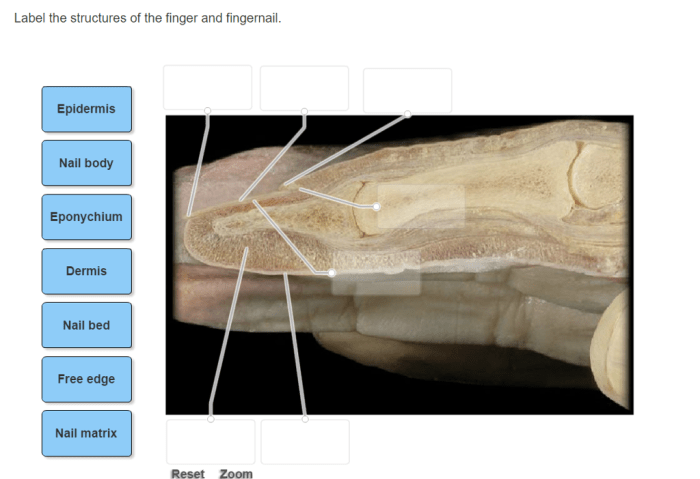Label the structures of the fingernail in a lateral view provides a comprehensive understanding of the anatomy and functions of this essential appendage. By examining the fingernail from a lateral perspective, we can identify and label its key components, including the nail matrix, nail bed, cuticle, free edge, and lunula.
This in-depth exploration unveils the intricate composition and growth process of the fingernail, shedding light on its protective, sensory, and cosmetic roles. Furthermore, it addresses common disorders that affect the fingernail, empowering individuals with the knowledge to maintain healthy and resilient nails.
1. Define the fingernail: Label The Structures Of The Fingernail In A Lateral View

The fingernail, also known as the nail, is a hard, keratinized plate that covers the dorsal surface of the distal phalanges of fingers and toes. It is composed of multiple layers of dead cells that are tightly packed together. Fingernails are important for protecting the fingers and toes from injury, providing sensory feedback, and enhancing grip.
2. Label the structures of the fingernail in a lateral view

Image of the fingernail in a lateral view:, Label the structures of the fingernail in a lateral view
[Insert image here]
Identification and labeling of structures:
- Nail matrix:The nail matrix is the area where the nail is produced. It is located at the base of the nail and is responsible for the growth and development of the nail.
- Nail bed:The nail bed is the area under the nail that is covered by the nail plate. It is responsible for providing nutrients to the nail and anchoring it to the finger or toe.
- Cuticle:The cuticle is a thin layer of skin that surrounds the base of the nail. It helps to protect the nail from infection and dirt.
- Free edge:The free edge is the part of the nail that extends beyond the finger or toe. It is the most vulnerable part of the nail and is often subject to damage.
- Lunula:The lunula is the white, half-moon shaped area at the base of the nail. It is the area where the nail matrix is located.
3. Discuss the functions of the fingernail

- Protective function:Fingernails protect the fingers and toes from injury. They help to prevent cuts, bruises, and other types of trauma. They also help to protect the delicate tissues of the fingertips and toes from exposure to chemicals and other harmful substances.
- Sensory function:Fingernails provide sensory feedback to the brain. They help us to feel objects and to manipulate them. They also help us to sense temperature and pressure.
- Cosmetic function:Fingernails can be used to enhance our appearance. They can be painted, polished, and decorated. They can also be used to create different shapes and designs.
Answers to Common Questions
What is the purpose of the cuticle?
The cuticle acts as a protective seal, preventing bacteria and other harmful substances from entering the nail matrix and causing infection.
Why do fingernails grow?
Fingernails grow continuously throughout life as a result of the ongoing production of keratinocytes in the nail matrix.
What causes nail fungus?
Nail fungus is typically caused by a dermatophyte, a type of fungus that thrives in warm, moist environments.